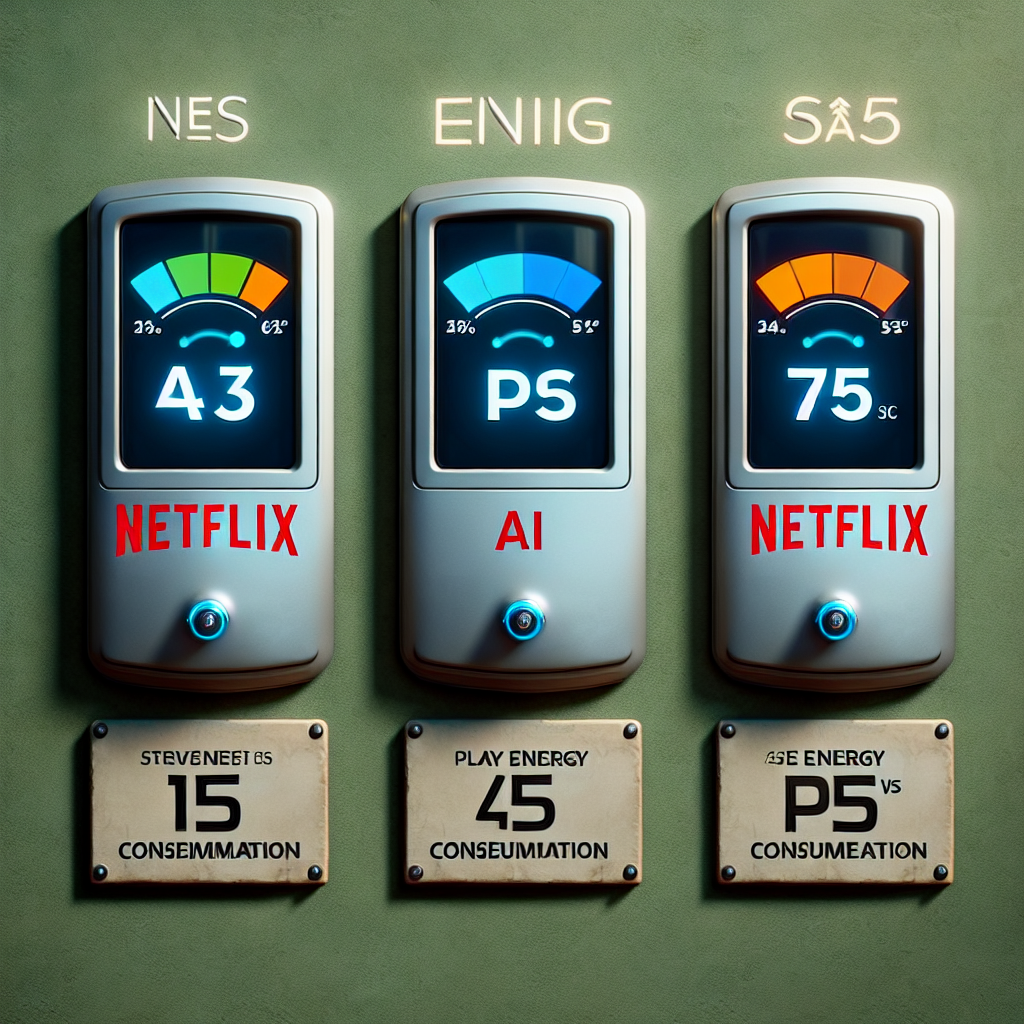
The debate surrounding artificial intelligence (AI) and its energy consumption has become increasingly prevalent in conversations about sustainability and technology. Headlines have claimed that AI’s energy demands rival those of entire countries, raising concerns about its environmental impact. However, a closer examination reveals an intriguing comparison between the energy used by AI and that of more familiar activities, such as streaming Netflix or playing on a PlayStation 5.
Recent reports, including one from Google, provide more concrete data on the power consumption of AI systems. Specifically, Google has published median energy figures for its Gemini text prompts, revealing an average usage of just 0.24 watt-hours (Wh) per prompt. While this statistic is enlightening, it comes with certain limitations; for instance, it only accounts for text-based outputs and does not factor in the energy used for image or video generation.
The critical question arises: how does the energy consumption of a single AI prompt measure up against daily activities? Let’s dive into this comparison. Overall, the power utilized by one AI prompt, which amounts to 0.24 Wh, equates to only 1.5% of the energy required to fully charge a new iPhone 17. In terms of streaming video, this consumption is just under 10 seconds of playback on a 55-inch television.
In reality, the majority of electricity used during a streaming session is attributed to the end device itself. For example, when enjoying video content at home, approximately 99.97% of the electricity consumed is used by the television, with data center contributions making up a mere 0.03%. This trend continues for laptops and smartphones, where data center energy use represents about 0.4% and 1.6% of the total energy consumption, respectively.
Considering AI’s power usage specifically from the data center perspective offers additional insights. While 0.24 Wh for an AI prompt may seem significant, it pales in comparison to the energy consumption associated with more intensive tasks, such as cloud gaming. In fact, the same amount of energy used for one AI prompt corresponds to approximately 3.3 seconds of playtime in a cloud gaming scenario.
So, how does this translate to daily usage? If we take into account the total number of active users and their cumulative prompts throughout the day, it’s estimated that each user engages with AI around 10 to 20 times daily. This calculation leads to an average energy consumption of roughly 3.6 Wh per user per day—representing only about 0.03% of a user’s overall daily electricity use. This figure is significantly less than the energy wasted by an indicator light on electronic devices.
The evidence suggests that while AI technology is under scrutiny for its energy demands, it is essential to contextualize its usage against traditional activities that consume far greater amounts of electricity. While the conversation around AI and energy consumption is valid, it often fails to weigh the actual impact accurately. Thus, consumers can rest assured that their nightly Netflix binges likely have a much larger ecological footprint than their interactions with AI.
This assessment not only provides transparency about the energy demands of AI but encourages a broader conversation about our daily power consumption patterns. By examining our habits and how they compare to technologies like AI, we can make informed choices that favor sustainability. In the end, the discussion surrounding AI’s energy use is not merely about the tech itself but about how we interact with various technologies in our lives.

Leave a Reply